Spider plants (Chlorophytum comosum), are houseplants known for their long, slender leaves that arch gracefully from the plant’s center. The leaves are typically green or variegated with white or yellow stripes. Spider plants are native to Central and Southern Africa, low-maintenance, making them popular with beginner and experienced plant owners alike. Spider plants have air-purifying abilities, as they are effective at removing pollutants such as formaldehyde and xylene from the air.

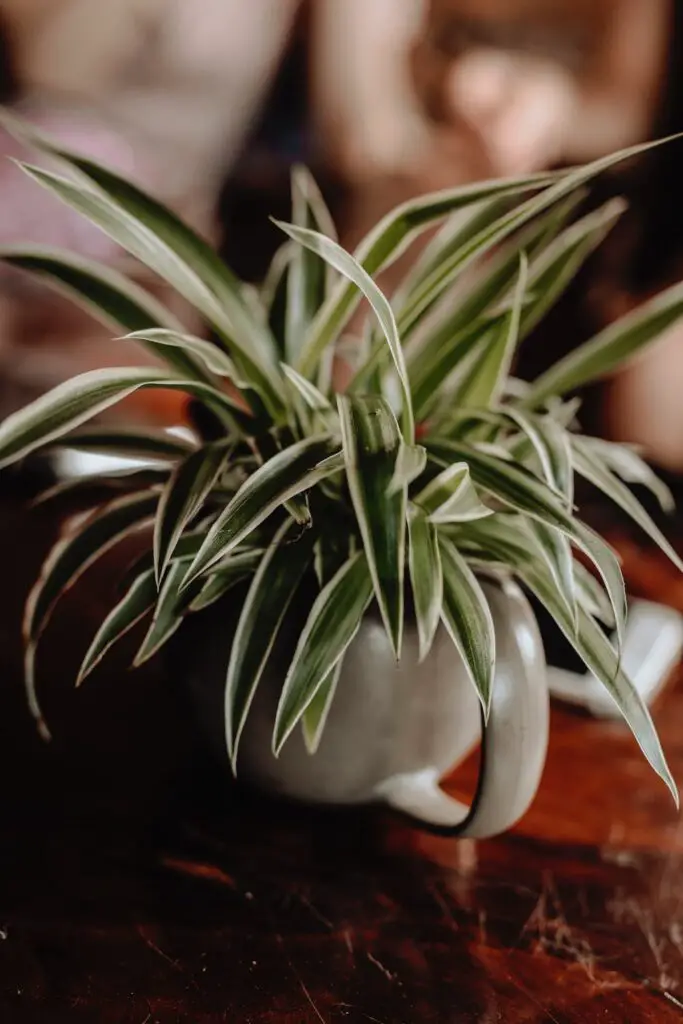
Table of Contents
Types of Spider plants
There are several types of spider plants, each with their own unique characteristics. Here are some of the most common types:
- Variegatum: This type of spider plant has green leaves with white stripes.
- Vittatum: Vittatum spider plants have green leaves with white edges.
- Bonnie: The Bonnie spider plant has curly leaves that are shorter and wider than other varieties, and they are usually variegated with white stripes.
- Hawaiian: The Hawaiian spider plant has green leaves with white stripes and a slightly more compact growth habit than other varieties.
- Reverse Variegated: This type of spider plant has white leaves with green edges, which is the opposite of the more common variegated varieties.
- Green: The green spider plant has solid green leaves without any variegation.
- Curly: The curly spider plant has leaves that are tightly curled and may have variegation.
All of these varieties of spider plants are easy to maintain and can make great additions to any indoor space.
Maintaining a Spider plant
Maintaining a spider plant is relatively easy and straightforward. Here are some tips to help you keep your spider plant healthy:
Light requirements
Spider plants prefer bright, indirect light, but can tolerate lower light levels as well. Direct sunlight can scorch the leaves, so it’s best to keep them out of direct sunlight.
A good location for a spider plant is near a window that receives bright, indirect sunlight. North-facing windows are ideal, as they provide bright light without the risk of direct sunlight. If you don’t have a window, you can also grow spider plants under fluorescent lights or other artificial light sources.
If you notice that your spider plant’s leaves are yellowing or browning, it could be a sign that the plant is receiving excess or insufficient light. Adjust the plant’s location accordingly, and monitor its growth to see if it improves.
Water requirements
Spider plants should be kept moist, but not waterlogged. Watering your spider plant will depend on factors, such as plant size, pot size, soil type and the environmental conditions in your home.
You should water your spider plant when the top inch (2.5 centimetres) of soil feels dry to the touch. This could be anywhere from once a week to once every two weeks, depending on the factors mentioned above. When watering your spider plant, be sure to saturate the soil thoroughly and allow any excess water to drain away. Accumulated water in the bottom of the pot can lead to root rot, which can be deadly to the plant.
How do I prevent a Spider plant leaves from turning yellow?
Yellowing leaves on a spider plant can be a sign of overwatering, underwatering, pests, or nutrient deficiencies. Overwatering or underwatering can cause yellowing leaves. To prevent this, make sure the soil is evenly moist, but not waterlogged. Monitor the plant’s leaves for signs of dehydration or overwatering. If leaves are wilted or drooping, it is a sign that the plant needs water. If the leaves are yellow or brown, it may be a sign that the plant is receiving too much water.
Fertiliser and soil requirements
Spider plants benefit from occasional fertilisation during the growing season (spring and summer). Use a balanced, water-soluble fertiliser and dilute to half strength before use.
Fertilise your spider plant every two to three weeks during the growing season. Over-fertilising can lead to burned leaves or stunted growth, also follow the instructions on the fertiliser package carefully. If your your spider plant’s growth has stagnated or it has yellowing leaves, it could be a sign of under-fertilisation.
Water the plant thoroughly before fertilising, as fertiliser applied to dry soil can burn the plant’s roots. During winter, when spider plants are not actively growing, you can reduce or stop fertilisation altogether. This will allow the plant to rest and prepare for the next growing season.
Spider plants prefer well-draining soil that is rich in organic matter. Spider plants grow the best in soil that is loose and porous, allowing for quick drainage to prevent root rot. A soil mix of peat moss, perlite, and vermiculite is ideal for spider plants. This mix provides good drainage and aeration, while also retaining moisture and nutrients. Avoid using heavy, compacted soils, as they can lead to poor drainage and waterlogged roots. Additionally, spider plants prefer slightly acidic soil with a pH between 6.0 and 6.5.
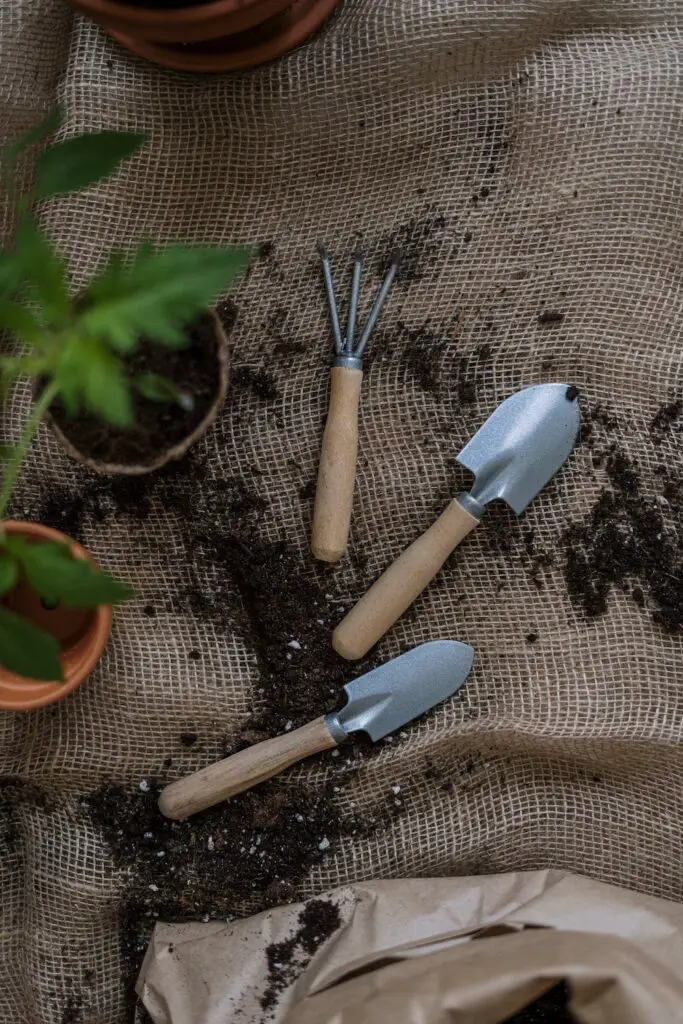
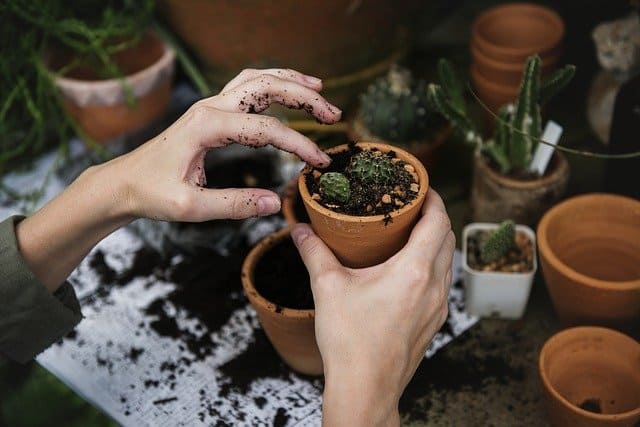
Pruning and Propagation
Propagating a spider plant is relatively easy, and there are two main methods you can use:
- Division: When your spider plant has outgrown its pot, you can divide it into smaller plants. Carefully remove the plant from its pot and gently separate the roots into smaller sections. Replant each section into its own pot, and water thoroughly.
- Plantlets: Spider plants produce small, plantlet-like growths on long stems called stolons. These plantlets can be removed from the parent plant and planted in their own pots. Wait until the plantlet has several leaves and roots that are at least an inch long before separating it from the parent plant.
Pruning a spider plant is not necessary, but it can help to keep the plant looking neat and tidy. Here are some tips for pruning a spider plant:
- Remove any dead or yellow leaves as soon as you notice them. This will help to keep the plant healthy and prevent the spread of any diseases.
- Trim back any long stems that are growing out of control. This will encourage the plant to produce more foliage and help it maintain its shape.
- Remove any flowers that appear, especially if you want to keep the plant compact. Spider plant flowers can be pretty, but they can also be a distraction from the plant’s main attraction, its foliage.
Temperature control and humidity
Spider plants prefer temperatures between 60-75°F (15-24°C), which is similar to the temperature range found in most indoor environments. Spider plants can’t tolerate extreme temperature fluctuations or drafts. It is important to keep them away from doors, windows, and heating or cooling vents.
In terms of humidity, spider plants can tolerate a wide range of humidity levels, but prefer moderate to high humidity. If the air in your home is dry, consider using a humidifier or placing a tray of water near the plant to help increase the humidity around it. If the tips of your spider plant’s leaves are turning brown, it could be a sign that the air around the plant is too dry. On the other hand, if the leaves are soft and mushy, it could be a sign of overwatering or high humidity.
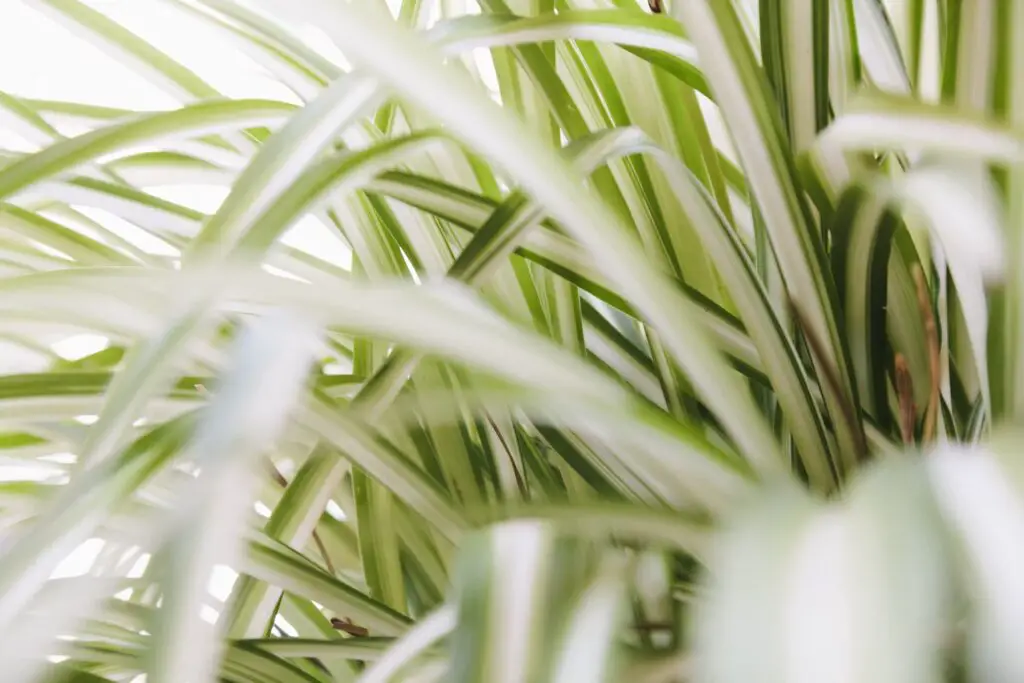
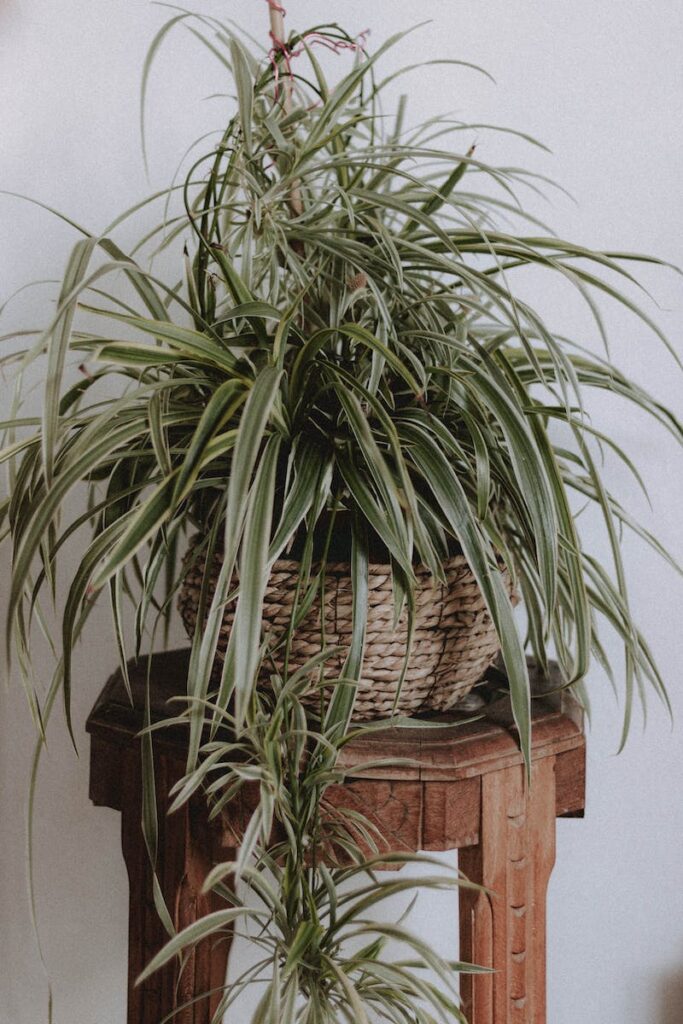
Repotting a Spider Plant
Spider plants prefer to be slightly root-bound, so they do not require frequent repotting. If your spider plant has outgrown its current pot, or the soil is no longer draining properly, it should be repotted.
As a general rule of thumb, you should repot your spider plant every 2-3 years. When repotting, choose a slightly larger pot than the original one, as spider plants prefer to be slightly root-bound.
To repot a spider plant, follow these steps:
- Carefully remove the plant from its current pot, being careful not to damage the roots.
- Gently loosen the roots and remove any old soil or dead roots.
- Place a layer of fresh potting soil in the bottom of the new pot, and then add the plant.
- Fill in the remaining space around the plant with fresh potting soil, and gently pat it down.
- Water the plant thoroughly to help settle the soil around the roots.
- After repotting, be sure to keep the plant in a shady spot for a few days to help it recover from the shock of transplanting.
Pest control
Spider plants can be affected by a few common houseplant pests such as spider mites, mealybugs, and scale insects. There are several natural pest control methods you can use to control them, including rinsing the leaves with water, wiping them down with rubbing alcohol, or using natural insecticidal soaps.
In addition to these specific pests, spider plants can also attract common houseplant pests such as fungus gnats and aphids. You may use natural methods such as yellow sticky traps, to catch adult gnats, neem oil or insecticidal soap, which can be used to control aphids.
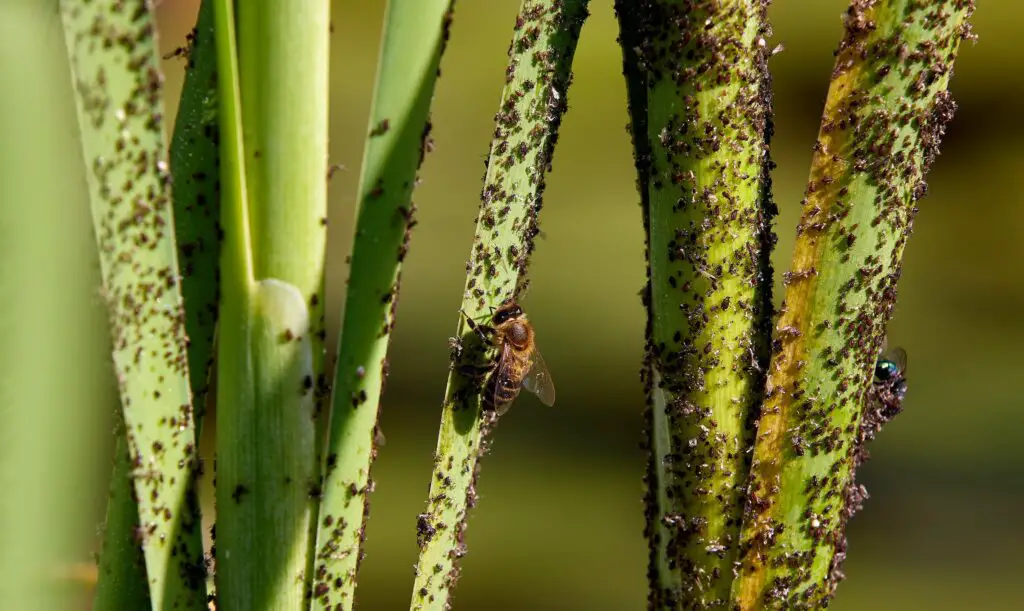
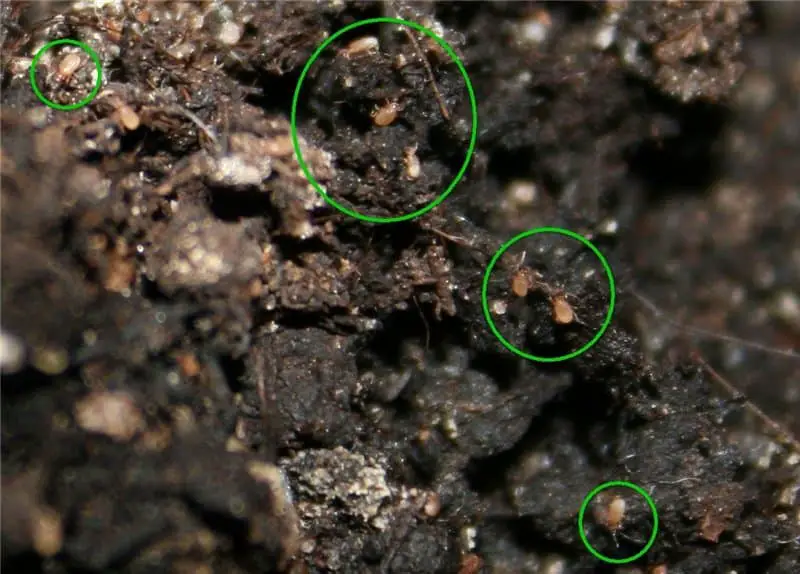
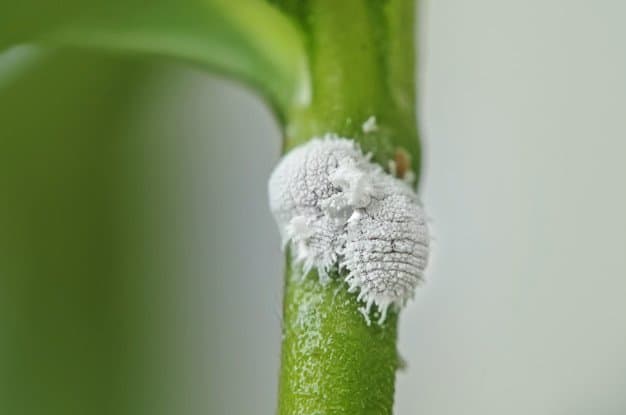
Can spider plants grow flowers?
Spider plants can produce flowers, although it is not very common for them to do so when grown indoors. When spider plants do produce flowers, they usually grow on long stems that emerge from the center of the plant. The flowers are typically small, white, and star-shaped, and they can be quite pretty. If your spider plant produces flowers, it could be a sign of stress or overgrowth. Spider plants kept in small pots or are overcrowded may be more likely to produce flowers as a way to reproduce and spread their genes. To prevent your spider plant from becoming stressed, be sure to repot it every few years and provide it with plenty of bright, indirect sunlight and regular watering.
Conclusion
Spider plants are a versatile and easy-to-care-for houseplant that can add a touch of greenery and freshness to any indoor space. With proper care and maintenance, including regular watering, bright but indirect sunlight, occasional fertilisation, and pest control, spider plants can thrive for many years. They are also easy to propagate, making them a great choice for beginner gardeners. Whether you are looking to add some greenery to your home or office, or simply want a low-maintenance plant that is both beautiful and beneficial, a spider plant is a great choice.
